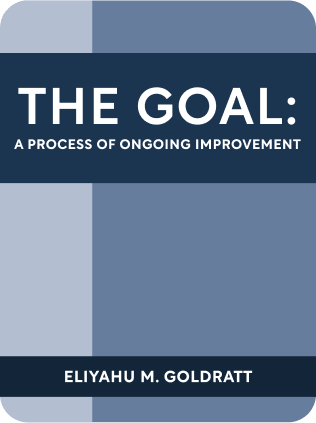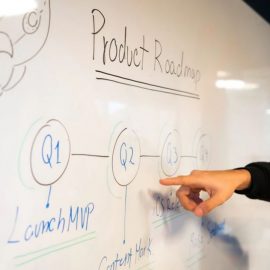

This article is an excerpt from the Shortform book guide to "The Goal: A Process of Ongoing Improvement" by Eliyahu M. Goldratt. Shortform has the world's best summaries and analyses of books you should be reading.
Like this article? Sign up for a free trial here .
What is The Goal bottleneck analysis? How can it help you improve a production line with poor output?
The Goal bottleneck analysis is the process of evaluating where your bottlenecks are and what you can do about them. According to the book, an increase in production capacity translates to increased revenue.
Keep reading for The Goal bottleneck analysis and how to do it.
The Goal Bottleneck Analysis
The bottleneck is any resource whose capacity is equal to or less than the demand placed on it. Here are a few ways to find it with The Goal bottleneck analysis.
Identify the bottleneck by seeing where you have the greatest upstream inventory piling up, and low inventory at the next step. If the non-bottlenecks are producing at equal rates (eg 100 parts/hour), the slowest step will have the largest upstream inventory.
Alternatively, see which downstream steps are most in demand of upstream parts and are idling. If you decrease inventory sizes, you will see which work center, if stopped, halts the whole line.
- Analogy of rocks and water: the water level corresponds to inventory, while rocks are problems disturbing the flow. Lower the water level until a rock sticks out. Solve that problem, then lower the water level further.
Alternatively, in a more brute-force comprehensive way, define your market demand (by sales), then compare the productivity of each step of the chain to this demand.
Common Contributors to Bottlenecks
- The machine is running inefficiently, performing unnecessary steps or with high setup/switching costs.
- The machine is running efficiently, but there simply aren’t enough machines
- The machine isn’t being run for the maximal number of hours
- The step requires a long batch period, and batches are not fully filled.
- Eg running a dishwasher – each cycle takes 2 hours and more dishes can’t be added midway through
- Poor quality upstream parts waste bottleneck time, because the bottleneck processes them into a product that is later rejected.
- Working on parts you don’t need urgently diverts capacity from the more important backlog.
- Occasionally, the bottleneck doesn’t have the upstream inventory to work at full capacity (and technically isn’t the bottleneck at that moment).
- This may be because the non-bottlenecks are working on non-bottleneck parts or haven’t built up inventory.
- Machines run idle because people are redistributed to work on non-bottlenecks.

———End of Preview———
Like what you just read? Read the rest of the world's best book summary and analysis of Eliyahu M. Goldratt's "The Goal: A Process of Ongoing Improvement" at Shortform .
Here's what you'll find in our full The Goal: A Process of Ongoing Improvement summary :
- How to increase your personal output
- How to increase your team's output
- Why obsessing over cost efficiency isn't going to help you with production






